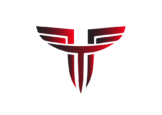Are you a small or midsize company trying to increase the number of leads generated by your website? If you’re looking for strategies to boost traffic to your website, you already know you need SEO.
Technical SEO, content creation, keyword optimization, and link building are all standard components of an SEO campaign. There are, of course, other factors to consider when it comes to SEO performance (search engine optimization). These, however, are the fundamentals. The first step is to make sure Google can crawl your site and identify your high-value content. As a result, technical SEO is generally the cornerstone of any search engine optimization approach.
A technical SEO campaign’s purpose is to make it possible for search engines to access, crawl, comprehend, and index your website. It’s a never-ending process of reducing obstacles to Google’s spidering of your site. You want to make your best content visible to users and Google.
Technical SEO
As the name implies, technical SEO is a type of SEO that focuses mostly on your website’s infrastructure.
If your website is experiencing technical difficulties, you may be missing out on opportunities to illustrate the purpose and substance of each of your web pages. Worse, it may render your website invisible to both search engines and customers.
Technical SEO guarantees that your website runs well and that Google is aware of the operation and content of each page.
The following items are often included in a technical SEO assessment and continuing practice, but are not limited to them.
- Indexability & Crawlability
- Performance of the Website
- Mobile Responsiveness HTML Tags
- Expired Links
- Canonical URLs
- Markup for Structured Data
- Pages containing Links that are Broken
- Tags for Images
- Content Duplication
Whether you’re going for an e-commerce SEO plan or attempting to raise brand recognition, an SEO audit will reveal which aspects of your website require attention.
INDEXABILITY AND CRAWLABILITY
Check for crawlability and indexability concerns first if your site is having trouble.
Bots must recognize and arrange your material for it to appear on search engine results pages. Your website will be invisible if they cannot do so, even if all other aspects of your site are optimized for search engines. A badly-formed robots.txt file is an all-too-common mistake. The robots.txt file is a text file that tells search engines which sites to crawl and ignore. Search engines may overlook your entire site if these are wrong or faulty.
This type of mistake can occur after a site migration or the launch of a new site, for example. Second, building an XML sitemap is one of the greatest techniques to verify that your site is fully crawlable.
Search engines use XML sitemaps to comprehend the layout of each website and the hierarchical importance of each page. They show when each page was last changed, how often it was updated, and how important it is on your site. With a directive in the robots.txt file and an entry in Google Search Console, you can inform Google where to locate your XML sitemap (Otherwise known as GSC). GSC is a valuable free service that allows Google to provide feedback on your site as it scans it.
PERFORMANCE ON THE SITE IN TERMS OF SPEED
The loading time of individual pages on a website is referred to as site speed performance. According to Google, the time it takes for your website to load is an essential component in your SEO rating.
Search engines may be repelled from crawling your entire website if your page performance is too slow. But, more crucially, the user experience will be harmed, and your bounce rates will increase. As your page loading time climbs from 1 to 10 seconds, the likelihood of a mobile user leaving your site increases by 123 percent. Your SEO rankings will suffer as a result of this.
You may use a variety of ways to boost the speed of your website. A fast hosting service, as well as a domain name server, might be beneficial. Use fewer scripts and plug-ins to reduce HTTP requests. Use compression tools like GZip to compress the data on your website. Use Photoshop or other image software to reduce the size of your photographs without sacrificing quality.
TAGS IN HTML
HTML tags are pieces of HTML code that identify different components of a page and may also influence how a web browser displays that element by default. The most important HTML tags are header tags, meta descriptions, and title tags (H1, H2, H3).
Proper HTML tag implementation and optimization may enhance your site’s organization and make it easier for Google to understand a page.
HTML tags that are missing or ineffective are a squandered chance for SEO. In the worst-case scenario, they might block information from appearing on a search engine results page.
RESPONSIVENESS ON THE GO
The appearance and operation of your website are important on mobile as well. Google has stated that a site’s mobile responsiveness is now as vital as, if not more important than, its desktop capabilities.
A responsive website changes itself automatically so that visitors may simply access it on any device, particularly on mobile phones.
Ensure that the hosting service you choose supports mobile responsiveness in each theme and template. If your site is currently responsive but not mobile-friendly, it may be time to engage a professional to build a mobile template for you.
CANONICAL HYPERLINKS
When duplicate or near-duplicate sites exist, a canonical URL is a preferable URL that you want Google to display on the search engine results page.
If your website contains the URLs yourwebsite.com?item=333 and yourwebsite.com/item/333, Google may show one of them at random.
When you use canonical links, you’re telling search engines which page should be displayed in the event of a duplication. A crawler’s life is made simpler since it has one fewer option to make.
Create a canonical link element that may be added into your page’s code to provide this information to search engines. It can be included in a document’s HTTP header.
MARKUP OF STRUCTURED DATA
One of the most complex aspects of SEO is structured data markup, commonly known as schema markup. Many websites do not use structured markup at all, or do so ineffectively.This can provide your website an advantage, particularly if you’re in a competitive business with competitive keywords.
The production of ‘rich snippets,’ which are chunks of code that assist search engines in comprehending and displaying portions of your material on the search engine results page, is a part of structured markup. These components add to the content on your website and may make it more attractive to the eye.
Schema markup is employed for structured data such as recipes, events, medical information, and reviews. The markup aids search engines in deciphering the connections between the data’s pieces (ex: ingredients and quantities). Schema.org is a key resource for scheme markup vocabularies.
Images, ratings, and even videos can be included in rich snippets. They’ll assist your website in attracting more visitors, raising its click-through rate, and improving its search engine results.
LINKS THAT HAVE BEEN BROKEN
This refers to links on your site that lead to pages that are no longer available. When a visitor clicks on a link on your site that leads to a page that no longer exists, a 404 (Page Not Found) message will appear. It’s great to have 404 pages here and there, but it might be aggravating for users when they discover such links on your own site. Giving users links to broken web pages is also ineffective therefore you should check for that on a regular basis. You may check both using a variety of tools, including the aforementioned GSC for broken internal links.
LINKS TO BROKEN PAGES
It’s also worth mentioning that if you have links from other sites to pages on your site that no longer exist, those inbound links lose their SEO value. Simply redirect those pages to excellent ones using a permanent (301) redirect to reclaim that value at a cheap cost. It would be a pity to throw good money after bad when it comes to link building.
IMAGE TAGS
Make sure all of your photos have Alt properties. These are text boxes in the image link that visually challenged people can use to describe the picture’s content. These are likewise beneficial for SEO, since they aid Google in comprehending these photos and their function on the website.
DUPLICATE CONTENT
Two or more pages with distinct URLs but the same — or nearly the same — content are referred to as duplicate content. This is typical on ecommerce sites, where each size/color version of a product has its own URL. When you duplicate a post into many categories on a blog, for example, this might happen.
TECHNICAL SEO IMPLEMENTATION
Hopefully, as the owner or manager of a small business, you now have a better understanding of the main factors. And you’re aware of why it’s critical to your website’s success. You can start transforming your small business’s online visibility with a solid technical SEO foundation!
The Hyper Fuel offers technical SEO for websites of all sizes. Our tested & proven comprehensive technical SEO optimizations improve websites’ crawling, indexing, and keyword rankings.
Connect with THF team today to make your business more visible and gain more sales than ever before.







